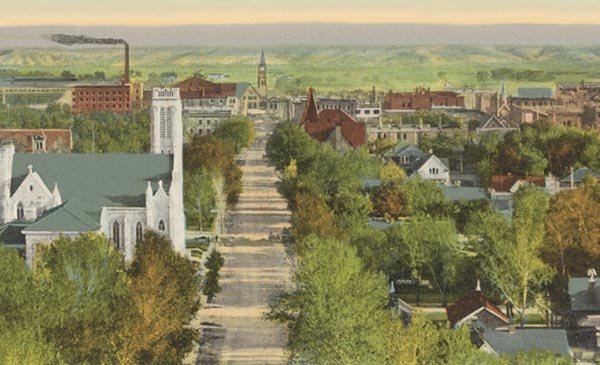
Capital Avenue, looking South, approx. 1910.
Church on left is St. Mary's Roman Catholic Cathedral. See also next photo. Further down the street, on the opposite side of the street, are the roofs of Central
High School. See photo on next page. At the end of the street is the Union Pacific
Depot.
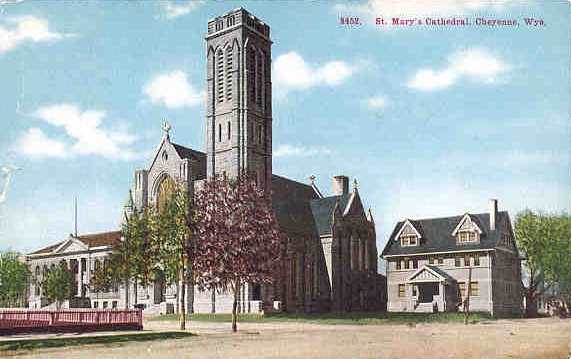
St. Mary's Cathedral, 1913.
Construction of the cathedral started in 1906, with the cornerstone being laid on July 7, 1907.
The cathedral was consecrated in 1909 by Bishop Maruice F. Burke, who had served
as Cheyenne's first Bishop. The building was designed by Omaha architects Fisher & Lowery, and
cost $125,000.
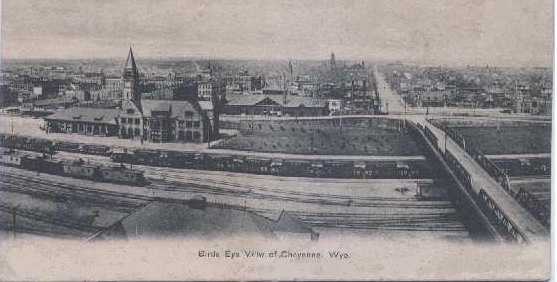
Bird's eye view of Cheyenne, looking north, 1906
The low lying building immediately past the viaduct is the Burlington Station. To the west of the
Burlington Station is the Phoenix Block, now the Wrangler Building, at 201 W. 16th Street.
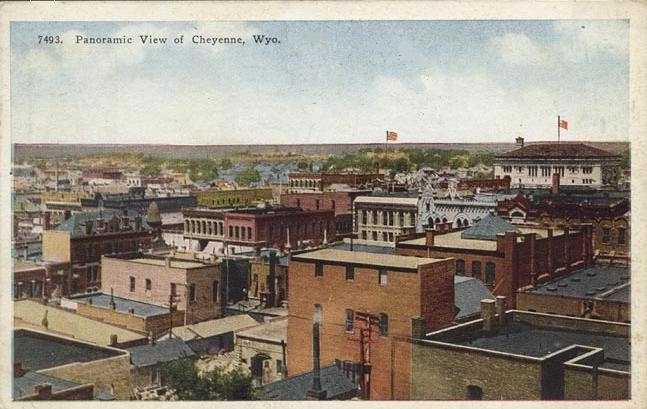
Cheyenne, looking northwest from railroad depot tower, approx. 1910.
Toward the left, the building with the small dome on a corner tower, is the
Tivoli Saloon at 301 W. 16th Street in which plans
for Frontier Day were originally formulated. It has been contended that Joe LeFors "liquored up" Tom Horn in the
Tivoli. The building later served as a
family department store and, after prohibition ended, reverted again to a saloon. The building
now houses a coffee house. Across the roofs in the foreground, can be seen the upper floors of
the Commercial Block, in which LeFors took Tom Horn's confession. To its right are the upper floors
of the Inter-Ocean in whose bar Horn was arrested. Beyond, is the United States Courthouse and
Post Office.
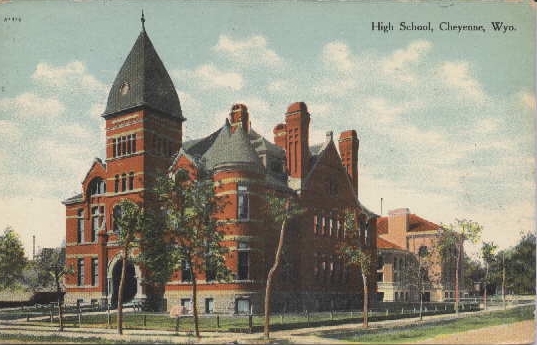
Cheyenne High School, 1911
The above school building was constructed in
1891 and was razed in 1929. It was located on Capital Avenue, across the street and
south from St. Mary's Cathedral.
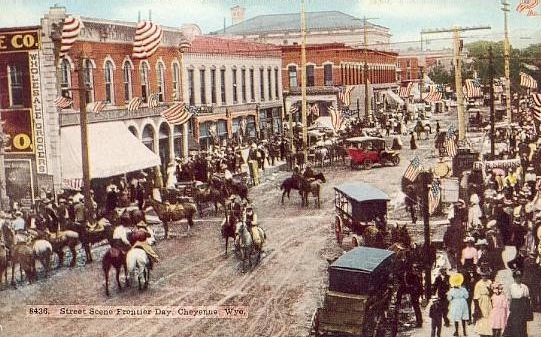
Frontier Day, 1910 The building on
the corner with the awning is the Union Mercantile Co., wholesale and retail
grocers.
As indicated in a subsequent chapter, Cheyenne has been home of Frontier Days since 1897. The caption is
not in error. Until 1915 the term was in the singular even though the event was over
multiple days.
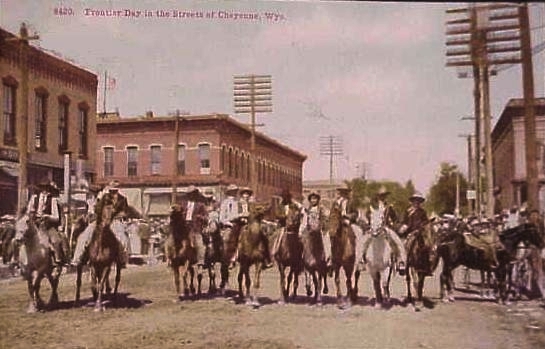
Frontier Day, 1909.
Cheyenne Photos continued on next page.
|